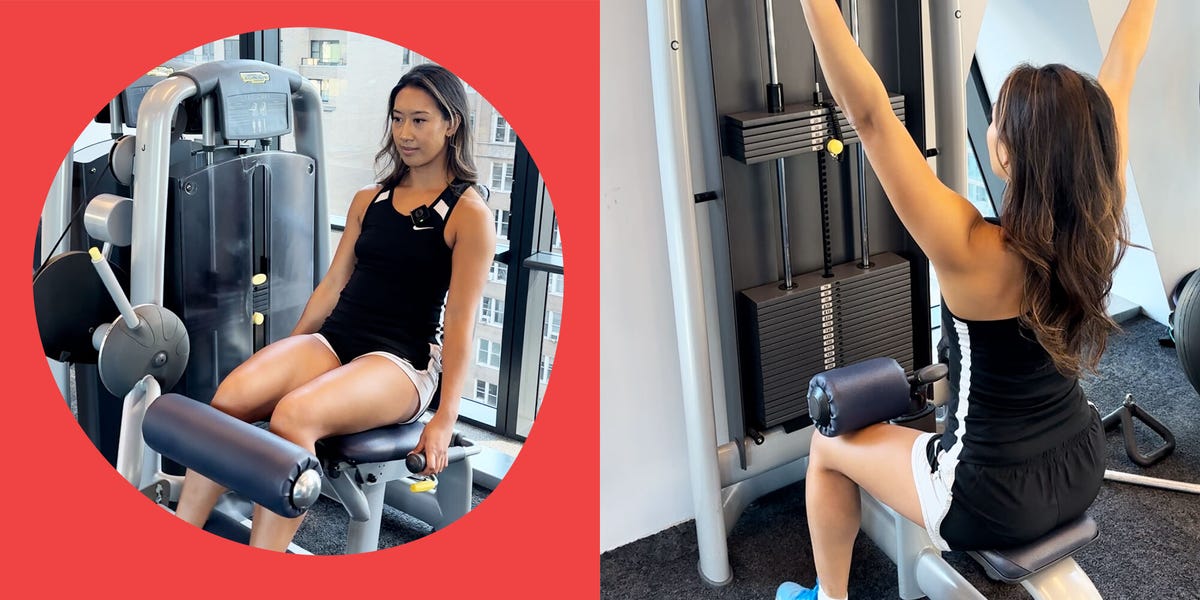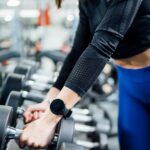When you think of weight machines, what’s the first thing that comes to mind? For many, it’s clunky gym equipment that feels like it belongs in a beginner’s corner or a rehab clinic. But that reputation is totally undeserved—and weight machines might just be your secret weapon for leveling up your form and getting stronger.
“People avoid machines because they’re stereotyped as being for beginners or older adults,” says Claudette Sariya, CPT, a personal trainer and fitness educator. “But really, they’re fantastic for everyone if used properly.”
In fact, Sariya says they’re an underrated tool, especially for women new to strength training or anyone who struggles with form. Because weight machines guide your movement, they reduce the risk of injury while still allowing you to target specific muscle groups.
Below, more on the hidden benefits of these weight room underdogs, and how to best utilize them in your own workouts.
Meet the trainer: Claudette Sariya, CPT, is a personal trainer and fitness educator based in New York City as well as a part of the Women’s Health/Men’s Health Strength in Diversity program’s class of 2023. Sariya also leads group runs for the Asian Women Stay Running (AWSTARS) club.
Why Weight Machines Deserve More Love
One reason weight machines get a bad rap? They sometimes limit your range of motion. “Maybe the machine isn’t the right size or set up for your body, so you end up moving in a weird pattern,” says Sariya. Also, because they provide stability, you’re not forced to engage your core as much as you would during free weight exercises. But this stability is actually what makes machines so helpful for certain populations—like beginners, older adults, or anyone recovering from an injury.
“My dad recently started going to the gym to help with joint pain,” says Sariya. “Knowing he’s using machines gives me peace of mind because they reduce the risk of him falling or getting hurt as he’s building strength and stability.”
Weight machines are also ideal for isolating specific muscles. Want to build strong, sculpted quads without tiring out your hamstrings or glutes? Hop on the leg extension machine, which isolates the quads by removing the need to engage your hamstrings and glutes when extending the knee in a seated position. Looking to master a pull-up but can’t quite lift your full body weight yet? The assisted pull-up machine is there to help, applying counterweight to reduce the amount of body weight you have to lift on your own, so you can focus on perfecting your form and building strength.
“Machines help improve form because they already have a guided path of motion,” says Sariya. “When you’re on a machine, you just focus on pushing or pulling, and it ensures you’re moving in the right direction.”
Benefits Of Weight Machines, At A Glance
- More stability, less risk: Machines provide support, making them ideal for beginners, older adults, or anyone recovering from an injury.
- Muscle isolation: Target specific muscle groups, like your quads or back, without overloading other areas.
- Form helper: The guided path of machines ensures you’re moving correctly—no guesswork involved!
- Confidence booster: Perfect for building strength without worrying about balancing or dropping free weights.
Weight machines have a place in everyone’s routine—regardless of fitness level.
If you’re starting your fitness journey and are unsure about form, machines are a good option. Most even have helpful illustrated instructions or QR codes right on them that link to videos, so you don’t need to guess how they work.
“They’re also great for building confidence,” says Sariya. “Machines let you practice movement patterns, test resistance amounts, and build foundational strength without the intimidation factor of free weights.”
Even seasoned lifters can benefit from machines, especially for hypertrophy (that is, muscle growth) or correcting muscular imbalances. “My left quad is a little weaker than my right due to an old injury,” she says. “Using machines like the leg press or leg extension helps me focus on that side to even things out.”
Try This 40-Minute Full-Body Machine Workout
Before you give this workout a try, watch the reel above to see Sariya in action demonstrating how to use the machines.
Instructions: Perform four sets of 10 to 12 reps for each exercise, resting for 60 seconds between each set and exercises to give your muscles enough time to recover without losing momentum. Choose a weight that makes the last two to three reps of each set feel challenging but doable with proper form. Before you begin each exercise, take a moment to adjust each machine to fit your body. Most weight machines have levers or pins to customize the seat height and range of motion, so don’t hesitate to consult the machine’s diagram or ask a gym staff member for help if needed.
Time: About 40 minutes | Equipment: Leg extension, leg curl, chest press, low row, lat pulldown machines | Good for: Full body
1. Leg Extension
What it targets: Quads
Why it rocks: When you’re seated on the leg extension machine, you can isolate the quads without recruiting much of your supporting muscles, such as the glutes and hamstrings.
How to:
- Sit on machine with back flat against the pad and feet tucked under the padded bar.
- Adjust bar to rest just above ankles. Extend legs fully, squeezing quads at the top, then lower back down slowly. That’s 1 rep.
2. Leg Curl
What it targets: Hamstrings
Why it rocks: This is a fantastic machine to help you improve knee stability and enhance lower body power, especially for runners. With stronger hamstrings, your jumps and sprints will feel more explosive.
How to:
- Lie face down on the machine with legs under the padded bar, just above ankles.
- Curl legs upward toward glutes, squeezing hamstrings, then lower the bar back to the starting position in a controlled motion. That’s 1 rep.
3. Chest Press
What it targets: Pecs, shoulders, triceps
Why it rocks: If you’re working toward improving your pushup, this move will help strengthen the major muscles needed to get there.
How to:
- Sit on the machine with back and head flat against the pad. Grip handles at chest level.
- Press handles forward until arms are fully extended, then slowly return to the starting position. That’s 1 rep.
4. Low Row
What it targets: Back, biceps
Why it rocks: The low row is a must for anyone struggling with poor posture. Especially if you work a desk job or sit a lot, incorporate this machine and movement into your regimen to target your back muscles for improved posture.
How to:
- Sit on the machine with feet on the platform and knees slightly bent. Grip handles with palms facing each other.
- Pull handles toward torso, squeezing shoulder blades together, then return to the starting position with control. That’s 1 rep.
5. Lat Pulldown
What it targets: Lats, shoulders, biceps
Why it rocks: You can think of the lat pulldown machine like a stepping stone toward getting a pull-up. Use this to supplement your pull days or upper body days and get closer to achieving your pull-up goals!
How to:
- Sit on the machine with thighs secured under the pad. Grip bar with a wide overhand grip.
- Pull bar down to chest while keeping back straight and shoulders down, then slowly let it rise back to the starting position. That’s 1 rep.
Talene Appleton is the fitness editor at Women’s Health, where she covers all things fitness, nutrition, and healthy living. She studied nutrition and exercise science at George Washington University and is a NASM-certified personal trainer and nutritional consultant. Passionate about the intersections between fitness, food, and community, she strives to foster inclusive and holistic wellness narratives for underrepresented populations. When not writing, she can be found hosting dinner parties and exploring new wellness and culinary experiences around New York and Los Angeles. Prior to her role at Women’s Health, she was the fitness and commerce editor at Men’s Health and contributed to General Surgery News, The Food Institute, and The Nessie.
Read the full article here




